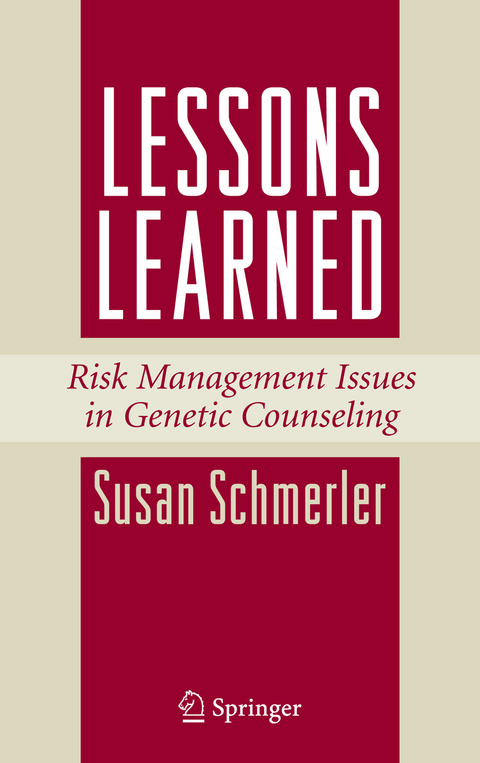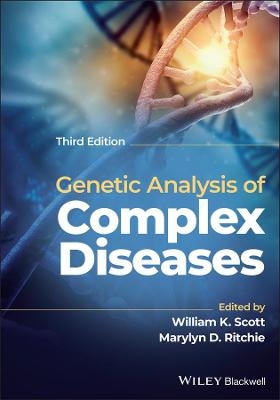
Lessons Learned
Springer-Verlag New York Inc.
978-1-4419-2468-1 (ISBN)
No one wants to be sued. A lawsuit is an assault on one’s self-image, reputation, and livelihood. It is physically, mentally, and financially draining. Professionals get sued because an individual believes she has been harmed or thinks there is enough evidence to convince a jury that she has been harmed. An accusation of harm can be expressed in different legal terms, such as breach of contract or negligence. The profession of genetic counseling has developed within the field of medicine, so that a medical model usually applies. Therefore, a formal complaint by a patient about a genetic counselor would come under the laws that apply to medicine as opposed to business. Most commonly, these complaints take the form of a malpractice lawsuit that claims malpractice or negligence.
The purpose of this book is (1) to provide genetic counselors with varying levels of experience and expertise with heightened awareness of the sources and processes of the law as it can affect their practice; (2) to offer them strategies for minimizing the potential for their being named in a lawsuit; and (3) to provide guidance for the management of current and emerging situations. The book discusses the day-to-day practices of genetic counselors and identifies areas in which possible causes of liability can be found. It looks closely at a negligence lawsuit as it would concern a genetic counselor, so that readers may learn where the potholes hazards and how to avoid them.
Susan Schmerler is a genetic counselor and supervisor in the Section of Genetics at the Children’s Hospital of St. Joseph's Regional Medical Center, Paterson, New Jersey. Her academic post is as Associate in Pediatrics at the University of Medicine and Dentistry-New Jersey Medical School. She is on the Board of Directors of the National Society of Genetic Counselors, where she serves as Chair of the Education Committee. From 1999 through 2003, she was the Chair of the Credentials Committee of the American board of Genetic Counseling.
1 Introduction.- 2 Sources of Liability.- 2.1 Forms of Legal Complaints.- 2.1.1 Tort Law.- 2.1.2 Fraud.- 2.1.3 Contract Law.- 2.2 Legal Initiatives.- 2.2.1 Federal Regulations.- 2.2.2 State Regulations.- 2.2.3 Criminal Complaints.- 2.2.4 Organizational Requirements.- 2.3 Private Practice.- 2.3.1 Partnerships.- 2.3.2 Billing.- 2.4 Industry/Technology.- 2.5 Reproductive Technology.- 2.6 Research.- 2.6.1 Human Subjects.- 2.6.2 Gene Transfer.- 2.6.3 Clinical Testing on Research Samples.- 2.6.4 Institutional Review Boards.- 2.6.5 Epidemiology.- 2.7 Trainees.- 3 Duty as an Element of a Lawsuit:.- 3.1 Duty Element.- 3.2 Establishing a Professional Relationship.- 3.2.1 Abandonment.- 3.3 Obligations and Duties.- 3.3.1 Standard of Care.- 3.3.2 Specialty Practitioners.- 3.3.3 Good Practice.- 3.3.4 Nongeneticists Providing Genetic Services.- 4 Duty as an Element of a Lawsuit: .- 4.1 Test for a Standard.- 4.2 Sources for Standards .- 4.2.1 Scope of Practice:.- 4.2.2 Code of Ethics.- 4.2.3 Professional Organizations.- 4.2.4 Professional Literature.- 4.2.5 Professional Guidelines.- 4.2.6 Credentials.- 4.2.7 Expert testimony.- 5 Duty as an Element of a Lawsuit:.- 5.1 Medical Records.- 5.1.1 Chart Contents.- 5.1.2 Ownership.- 5.1.3 Storage of Medical Records.- 5.1.4 Shadow Charts.- 5.2 Failure to FollowPolicies and Procedures.- 5.2.1 Informed Consent.- 5.2.2 Confidentiality.- 5.3 Improper Techniques.- 5.3.1 Nondirective.- 5.3.2 Nonjudgmental/Value Neutral.- 5.3.3 Transcultural Competency.- 5.3.4 Defenses for the Duty Element.- 6 Breach, Causation and Damages as Elements of a Lawsuit.- 6.1 Breach .- 6.1.1 Decision Makers.- 6.1.2 Defense to Breach Element.- 6.2 Causation.- 6.2.1 Remote Causation.- 6.2.2 Proximate Cause.- 6.2.3 Informed Consent Cases.- 6.2.4 Defense to the Causation Element.- 6.3 Damages.- 6.3.1 General Damages.- 6.3.2 Compensatory Damages.- 6.3.3 Noneconomic Damages.- 6.3.4 Punitive Damages.- 6.3.5 Assessing Damages.- 6.3.6 Defense to the Damage Element.- 7 Defenses to a Lawsuit.- 7.1 Helping Yourself .- 7.2 Affirmative Defenses to Malpractice Lawsuits.- 7.2.1 Statute of Limitations.- 7.2.2 Contributory Negligence.- 7.2.3 Comparative Negligence.- 7.2.4 Assumption of the Risks.- 7.2.5 Good Samaritan Statute.- 7.2.6 Indemnity or Release.- 7.3 Countersuits.- 7.3.1 Malicious Prosecution.- 7.3.2 Abuse of Process.- 7.3.3 Defamation.- 7.3.4 Negligence.- 7.3.5 Intentional Torts.- 8 Communication.- 8.1 Face-to-Face.- 8.2 Electronic Communication.- 8.2.1 Internet.- 8.3 Privacy.- 8.3.1 Transmission of Information.- 8.4 Managing Your Malpractice Exposure in Cyberspace.- 9 Conclusions: Lessons Learned .- 9.1 Defensive Practice.- 9.2 Advice from Experience.- Appendix.- A.1 Definition of Genetic Counseling.- A.1.1 1975.- A.1.2 2006.- A.2 Scope of Practice.- A.3 The Code of Ethics of the National Society of Genetic Counselors.- A.4 Suggested Readings.- Notes.- Index .-
| Zusatzinfo | XVII, 152 p. |
|---|---|
| Verlagsort | New York, NY |
| Sprache | englisch |
| Maße | 155 x 235 mm |
| Themenwelt | Geisteswissenschaften ► Psychologie ► Allgemeine Psychologie |
| Geisteswissenschaften ► Psychologie ► Klinische Psychologie | |
| Geisteswissenschaften ► Psychologie ► Sozialpsychologie | |
| Medizin / Pharmazie ► Medizinische Fachgebiete ► Psychiatrie / Psychotherapie | |
| Studium ► 2. Studienabschnitt (Klinik) ► Humangenetik | |
| Sozialwissenschaften ► Pädagogik ► Sozialpädagogik | |
| Sozialwissenschaften ► Soziologie | |
| ISBN-10 | 1-4419-2468-X / 144192468X |
| ISBN-13 | 978-1-4419-2468-1 / 9781441924681 |
| Zustand | Neuware |
| Informationen gemäß Produktsicherheitsverordnung (GPSR) | |
| Haben Sie eine Frage zum Produkt? |
aus dem Bereich


